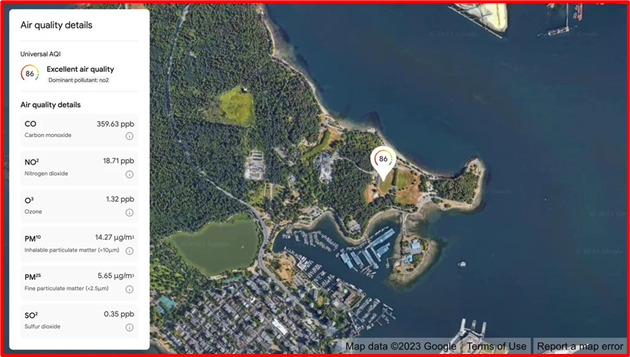At a time when ESG parameters appear to be dropping off from the PE / VC priority lists while they debate funding a business, Google has come out with a set of sustainability APIs that uses the company’s artificial intelligence (AI) knowledge to provide real-time data pollution.
These products apply AI and machine learning, along with aerial imagery and environmental data, to provide up-to-date information about solar potential, air quality and pollen levels. With this technology, developers, businesses and organizations can build tools that map and mitigate environmental impact, Google says in a blog post.
Taking off from Project Sunroof
Some of our readers may recall that Google had launched Project Sunroof back in 2015 as an indigenous maps layer that combined location, sunlight and navigation data to show how much energy a solar panel on a rooftop could potentially generate. So, if a neighbor had a panel that could generate more than the home requires, she could give off some of it next door for a fee.
Close two two decades later, Google formally announced its new sustainability suite of APIs at its Cloud Next event. Yale Maguire, VP of Geo Sustainability at Google says, these tools will help the company work towards its ambition to help individuals, cities, and partners collectively to help reduce 1 gigaton of their carbon equivalent emissions annually by 2030.
Aiming to create sustainability tools for industry
With insights into how the planet is changing, we can build sustainability tools and support other organizations to do the same, Maguire says while providing details of how the Solar API is built on top of Project Sunroof with modern maps and advanced computing resources. It will cover 320 million buildings across 40 countries including the US, France and Japan.
The official was quoted by Engadget as saying that solar power demand has risen in recent years as was evident by the 60% spike in searches around “rooftop solar panel” in 2022. “We’ve been seeing this solar transition and saw opportunities to bring this data and technology to businesses around the world,” he said.
Google’s AI team trained the specific AI model to extract specific angles and slopes of a rooftop from overhead satellites or aerial photographs to which it added historical weather data and current energy pricing. This data provides home owners and enterprises with a holistic estimate of how much the panels could produce without the support of a technician.
Air Quality and Pollen APIs also coming
In parallel, the blog post also announced that Google would expand Air Quality later into its own API offerings for more than 100 countries in the world. “This API validates and organizes several terabytes of data each hour from multiple data sources (government monitoring stations, meteorological data, sensors and satellites) to provide a local and universal index,” he said.
The system will even take current traffic conditions and vehicle volume into account to better predict what pollutants will be predominant. “This process offers companies in healthcare, auto, transportation and more the ability to provide accurate and timely air quality information to their users, wherever they are,” he said in the blog post.
Finally, Maguire also revealed that Google was also evolving its current pollen-tracking maps layer into a full API. The rise in temperatures and greenhouse gas emissions also causes pollen producing plants to grow in more places and pollen production to increase. This could create adverse effects on people with seasonal allergies, he said while noting that this service will be available in 65 countries to start with.
Source: Google.com



